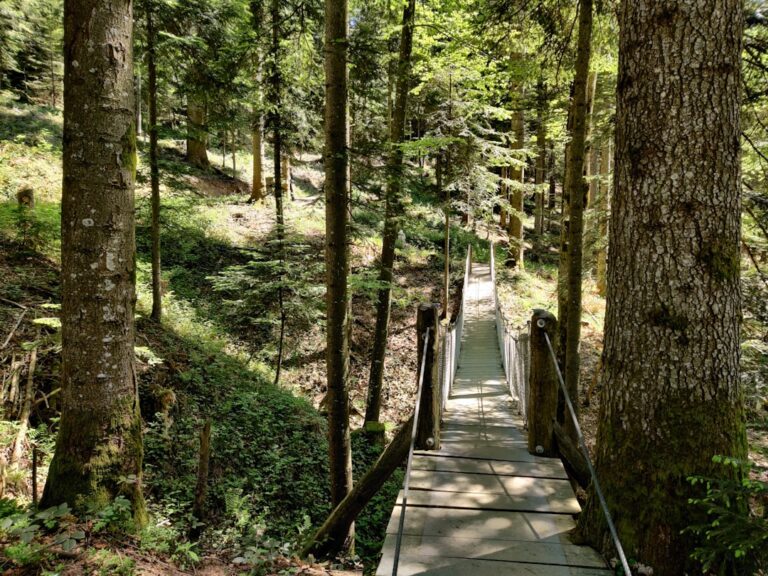Ce să faci pentru a te bucura de turismul urban modern

Embarking on an urban adventure requires thoughtful planning to ensure a fulfilling experience. The first step is to identify the city you wish to explore, taking into account its unique characteristics, attractions, and cultural offerings. Researching the city’s history, demographics, and notable landmarks can provide a solid foundation for your itinerary.
Consider the time of year you plan to visit; certain cities may have festivals or events that can enhance your experience. For instance, visiting Edinburgh during the Festival Fringe in August offers a vibrant atmosphere filled with performances and street art, while a winter visit might allow you to enjoy the city’s enchanting Christmas markets. Once you have selected your destination, it is essential to create a balanced itinerary that includes a mix of popular attractions and hidden gems.
While iconic sites such as the Eiffel Tower in Paris or the Colosseum in Rome are must-sees, delving into lesser-known neighbourhoods can reveal the authentic spirit of the city. Engaging with local communities and exploring off-the-beaten-path locations can lead to unexpected discoveries, such as quaint cafés or artisan shops that reflect the city’s character. Additionally, consider the logistics of your trip; mapping out your accommodations in relation to key sites can save time and enhance your overall experience.
Exploring the city’s local culture and history
Uncovering the City’s Narrative
Each urban area has its own narrative shaped by historical events, migrations, and cultural exchanges. For example, in Istanbul, the convergence of East and West is palpable in its architecture, cuisine, and traditions.
Delving into the City’s Past
Visiting historical sites such as the Hagia Sophia or the Topkapi Palace provides insight into the city’s rich past, while engaging with local guides can offer personal anecdotes that bring history to life. Participating in cultural events or festivals can also provide a deeper understanding of local customs and practices. Moreover, museums and galleries often serve as windows into a city’s soul.
Connecting with the City’s Heritage
The British Museum in London, for instance, houses artefacts from various cultures around the world, allowing visitors to appreciate the interconnectedness of human history. Local history museums can also provide context about the city’s development and its residents’ stories. Engaging with local historians or attending lectures can further enrich your understanding of the city’s heritage. By immersing yourself in the local culture and history, you not only gain knowledge but also foster a connection with the place and its people.
Embracing sustainable travel in urban areas
As urbanisation continues to rise, embracing sustainable travel practices becomes increasingly important for preserving the environment and supporting local communities. One effective way to contribute to sustainability is by choosing eco-friendly accommodations that prioritise green practices. Many hotels now implement energy-saving measures, use sustainable materials, and support local initiatives.
Researching these options before booking can ensure that your stay aligns with your values. In addition to selecting sustainable lodging, consider how you navigate the city. Opting for public transportation over private vehicles reduces carbon emissions and alleviates traffic congestion.
Many cities offer extensive public transport networks that are both efficient and affordable. For instance, cities like Amsterdam and Copenhagen are renowned for their bicycle-friendly infrastructure, encouraging visitors to explore on two wheels rather than by car. Walking is another excellent way to experience urban areas sustainably; it allows for a more intimate exploration of neighbourhoods while minimising your environmental footprint.
Engaging in activities that promote sustainability not only benefits the planet but also enhances your travel experience by connecting you more closely with the local environment.
Trying the local cuisine and dining experiences
Culinary exploration is an integral part of any urban adventure, offering a delicious gateway into a city’s culture. Each region boasts its own unique flavours and traditional dishes that reflect its history and geography. For instance, when visiting Barcelona, indulging in tapas at a local bar provides insight into Spanish dining customs while allowing you to sample a variety of flavours in one sitting.
Similarly, in Bangkok, street food stalls serve up authentic Thai dishes that are both affordable and bursting with flavour, showcasing the country’s culinary heritage. Dining experiences can also extend beyond traditional meals; consider participating in cooking classes or food tours that delve deeper into local gastronomy. These activities not only teach you about regional ingredients and cooking techniques but also foster connections with local chefs and food artisans.
In cities like Florence, cooking classes often include visits to local markets where participants can select fresh produce before learning to prepare classic Italian dishes. Such immersive experiences create lasting memories while enhancing your appreciation for the local cuisine.
Taking advantage of public transportation and walking tours
Navigating an urban landscape can be an adventure in itself, particularly when utilising public transportation systems that are often designed to be user-friendly and efficient. Cities like Tokyo have extensive metro networks that allow visitors to traverse vast distances quickly while providing an opportunity to observe daily life from a unique perspective. Familiarising yourself with transit maps and schedules can empower you to explore various neighbourhoods without the hassle of driving or parking.
Walking tours are another excellent way to engage with a city’s atmosphere while gaining insights from knowledgeable guides. Many cities offer themed walking tours that focus on specific aspects of their culture or history, such as street art in Berlin or ghost tours in Edinburgh. These guided experiences often lead participants through hidden alleyways and lesser-known sites that may not be included in traditional tourist itineraries.
Additionally, self-guided walking tours can be tailored to your interests; using mobile apps or printed maps allows for flexibility in exploring at your own pace while discovering unique facets of the city.
Engaging in urban outdoor activities and green spaces
Urban areas often boast an array of parks and green spaces that provide a welcome respite from the hustle and bustle of city life. Engaging in outdoor activities not only promotes physical well-being but also allows for moments of tranquillity amidst the urban landscape. Many cities have beautifully landscaped parks where visitors can enjoy leisurely strolls or picnics; Central Park in New York City is a prime example of an urban oasis that offers diverse recreational opportunities.
In addition to traditional park activities, many cities now offer outdoor fitness classes or guided nature walks that encourage residents and visitors alike to connect with their surroundings. For instance, London’s Royal Parks frequently host yoga sessions or running clubs that invite participants to enjoy both exercise and nature simultaneously. Exploring urban green spaces can also lead to encounters with local wildlife; birdwatching or simply observing flora can deepen your appreciation for biodiversity within city limits.
Discovering the city’s art and architecture
Art and architecture serve as powerful reflections of a city’s identity, showcasing its evolution over time through various styles and movements. Exploring these elements can provide profound insights into a city’s cultural fabric. Iconic structures such as the Sydney Opera House or the Guggenheim Museum in Bilbao exemplify how architecture can become synonymous with a city’s image while also serving functional purposes.
Beyond famous landmarks, street art has emerged as a vibrant form of expression in many urban areas. Cities like Melbourne are renowned for their dynamic street art scenes, where murals adorn buildings and alleyways, transforming public spaces into open-air galleries. Participating in guided street art tours can reveal the stories behind these works while highlighting the artists’ contributions to local culture.
Additionally, visiting galleries and exhibitions allows for engagement with contemporary art movements, fostering connections between artists and audiences.
Supporting local businesses and artisans
Supporting local businesses is crucial for sustaining vibrant urban communities while enhancing your travel experience. Shopping at independent boutiques or markets not only contributes to the local economy but also allows you to discover unique products that reflect the city’s character. For example, visiting artisan markets in cities like Marrakech offers an opportunity to purchase handcrafted goods while interacting with local artisans who share their stories and techniques.
Dining at locally-owned restaurants further enriches your experience by providing authentic culinary offerings that often showcase regional ingredients and traditional recipes. Many cities now promote initiatives encouraging visitors to choose local establishments over chain restaurants, fostering a sense of community while ensuring that your dining choices have a positive impact on the area’s economy. Engaging with local businesses not only enhances your understanding of the city but also creates meaningful connections that extend beyond your visit.
In conclusion, planning an urban adventure involves careful consideration of various elements that contribute to a rich travel experience. By immersing yourself in local culture, embracing sustainability, exploring culinary delights, utilising public transport, engaging with outdoor activities, discovering art and architecture, and supporting local businesses, you create a multifaceted journey that resonates long after you return home. Each city offers its own unique tapestry of experiences waiting to be uncovered by those willing to explore beyond the surface.
If you are looking to truly enjoy modern urban tourism, one important aspect to consider is immersing yourself in the local culture and cuisine. An article on Voyage Voyage provides tips on how to savour local flavours and seasonal recipes while exploring a new city. By trying out traditional dishes and visiting local markets, you can enhance your travel experience and gain a deeper understanding of the destination you are visiting. Embracing the culinary delights of a place is a great way to connect with its people and history, making your urban adventure even more memorable.
FAQs
What is urban tourism?
Urban tourism refers to the act of visiting cities and exploring their cultural, historical, and modern attractions. It involves experiencing the urban lifestyle, architecture, cuisine, and entertainment options that cities have to offer.
What are some activities to enjoy modern urban tourism?
Some activities to enjoy modern urban tourism include visiting museums, art galleries, and historical landmarks, exploring local markets and shopping districts, trying out different cuisines at restaurants and food markets, attending cultural events and festivals, and experiencing the nightlife and entertainment options of the city.
How can I make the most of my urban tourism experience?
To make the most of your urban tourism experience, it’s important to research and plan ahead, prioritize the attractions and activities you want to experience, immerse yourself in the local culture, interact with locals, and be open to trying new things. Additionally, consider using public transportation or walking to explore the city and reduce your environmental impact.
What are some tips for sustainable urban tourism?
Some tips for sustainable urban tourism include supporting local businesses and artisans, minimizing waste and plastic usage, respecting the local culture and customs, using public transportation or cycling instead of driving, and choosing eco-friendly accommodation options. Additionally, consider participating in community-based tourism activities that support the local economy and environment.







